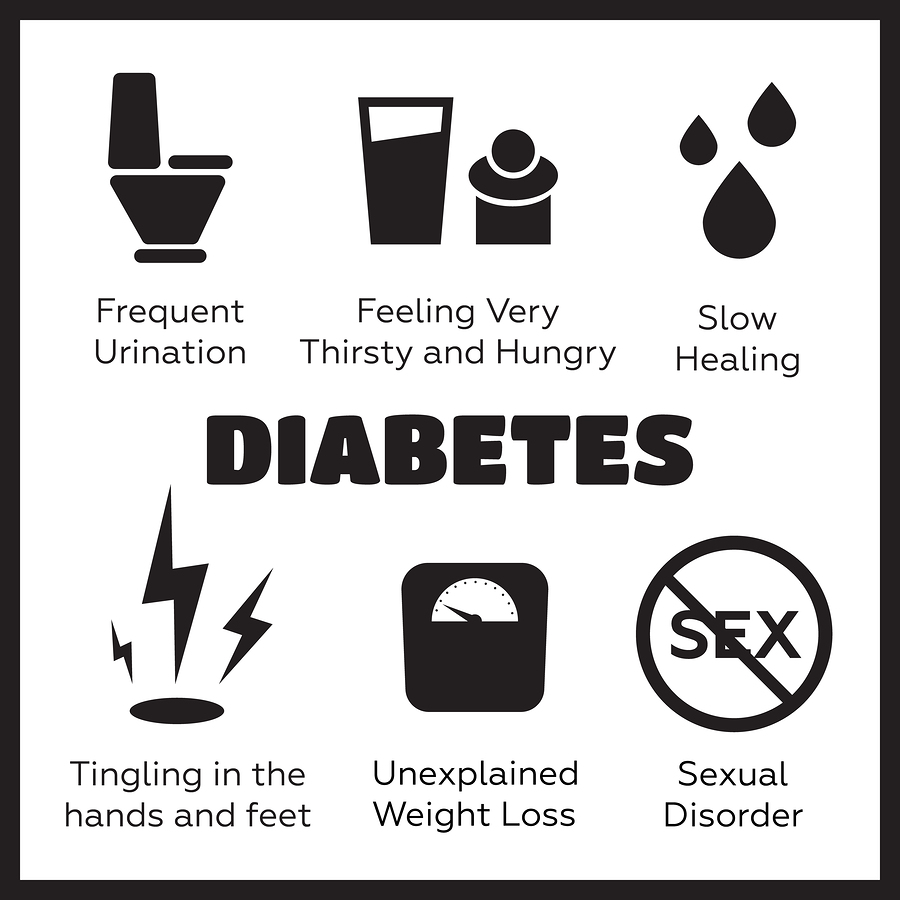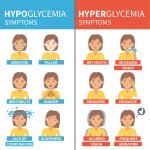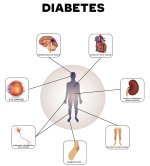Signs of Diabetes

The signs of diabetes mellitus can be hard to identify early on because they can easily be attributed to things. The number of people suffering from diabetes mellitus is increasing every year. At the most basic level, diabetes is a medical condition in which there is too much glucose in the blood and too little glucose in the cells. Before we talk about the signs of diabetes, lets talk a little more about what causes it so that the signs will make sense.
There are two main types of diabetes
• Type 1 diabetes
• Type 2 diabetes
In type I diabetes mellitus there is a deficiency or complete unavailability of the hormone insulin. This is a hormone released by the pancreas and it helps the glucose from the blood to enter the cells. In type I diabetes mellitus there is a deficiency or complete unavailability of the hormone insulin. This is a hormone released by the pancreas and it helps the glucose from the blood to enter the cells.
In type II diabetes mellitus the pancreas is producing insulin but the cells become resistant to responding properly towards the insulin. This condition is termed insulin resistance. Unfortunately, this type of diabetes mellitus remains unnoticed for a longer period of time because its signs are of subtle nature. It is believed that millions of people worldwide are insulin resistant and/or diabetic and don’t know it.
Common Signs of Diabetes You Should Be Aware Of
Signs of both types of diabetes mellitus are generally mistaken for several different conditions, illnesses and other environmental factors.
Unexplained Weight Loss or Weight Gain
One of the easiest to recognize signs of diabetes is a significant and unexplained drop in the weight of the sufferer. People notice weight loss, especially if they haven’t changed their diet. The reason behind this drastic loss in weight is that body starts to break down both fats as well as muscle mass to produce energy. This sign can be easily noticed in the case of type I diabetes mellitus. However, this sign is less common in the case of diabetes mellitus type II unless the person has had uncontrolled type 2 diabetes for a long time and the beta cells in their pancreas have died off. Typically, a Type 2 Diabetic will gain weight as their blood sugars become more and more unregulated and their body releases increasing levels of insulin.
Constant Thirst and Frequent Urination
The next most commonly ignored sign of diabetes is insatiable thirst combined with increased urination. Generally, the blame of this sign goes to exercise, weather or many other things but not diabetes. The reason for increased thirst is that your kidneys are forced to work overtime to filter and absorb excess sugar in your blood. If they can’t keep up, excess sugar is excreted into your urine along with fluids from your tissues. This triggers more frequent urination, leaving you dehydrated. Meanwhile, you will drink more water because you are thirsty which will cause you to urinate even more. This vicious cycle can lead to dehydration as well as extreme thirst.
Unexplained Fatigue
The next of the most common signs of diabetes is unexplained fatigue. This is often brought on by dehydration due to increased urination or because your body can’t use sugar as well to meet its energy needs. Fatigue is often confused with many other things. However, it is vital to note how often the person feels fatigued and for how long this feeling persists. Unexplained fatigue must never be ignored in the case of elderly people.
Other Common Signs of Diabetes
Other common symptoms of diabetes mellitus are recurrent vaginal infections and tingling in the hands and feet.
Chronic vaginal infections are common in diabetics and caused by blood sugar imbalances.
Numbness and tingling sensations in extremities in another common sign. Called neuropathy, the tingling and numbness are the result of the damage to the nerves of the feet and hand brought on by high blood sugar levels.
What You Should Do If You Are Experiencing Signs of Diabetes
If you or someone you know are experiencing any of the above signs of diabetes, do contact a doctor or healthcare provider to be tested for diabetes. If you absolutely don’t want to go that route, you can also buy an over the counter blood sugar monitor and test your own blood sugar levels first thing in the morning and before and after every meal to see if you might have a problem.



New! Facebook Comments
What do you think? Share your thoughts below...